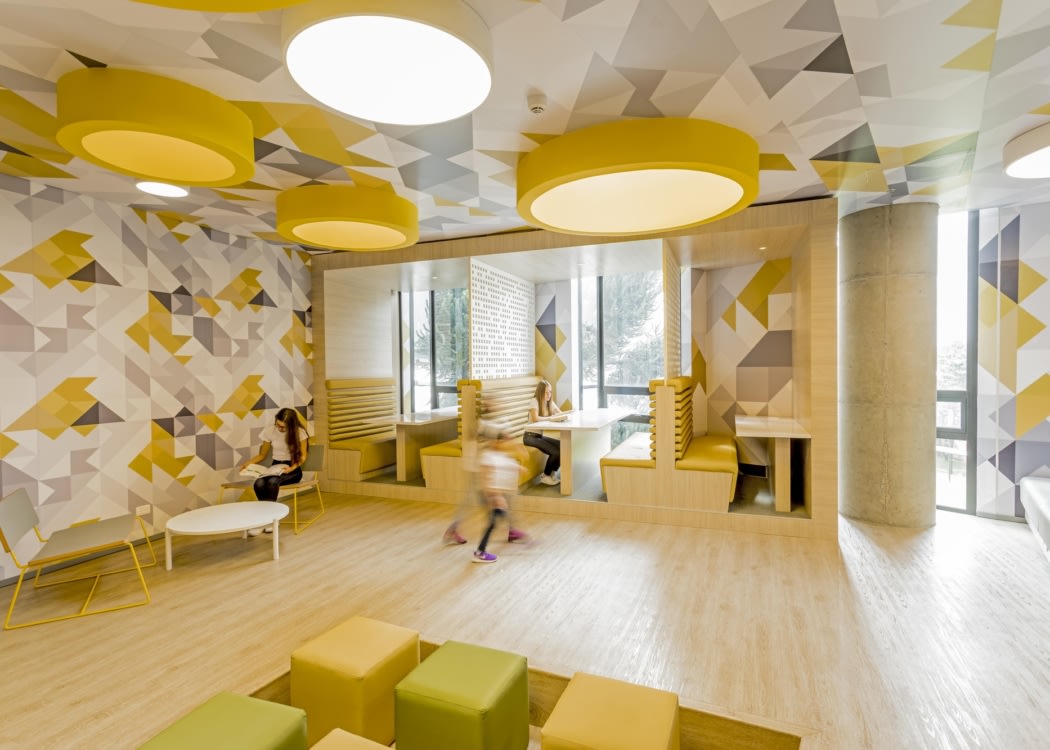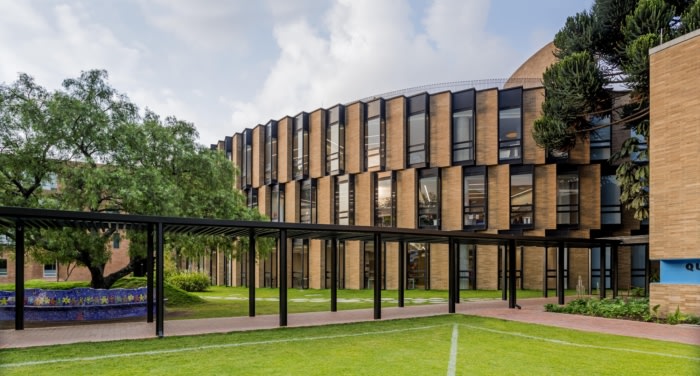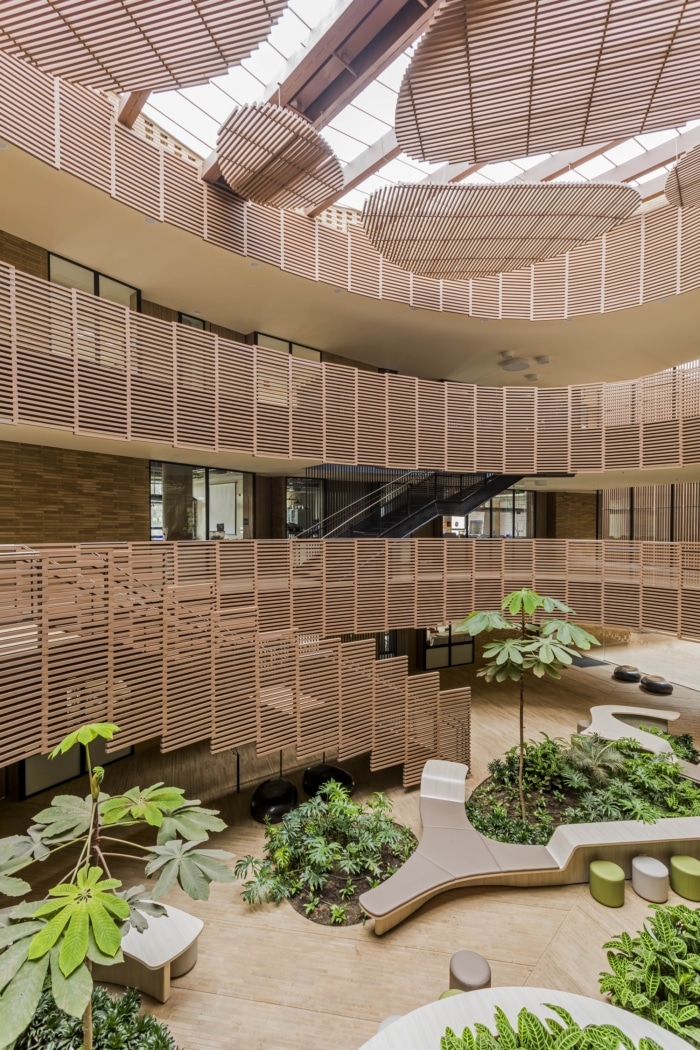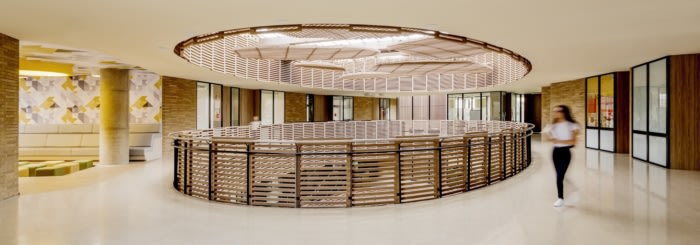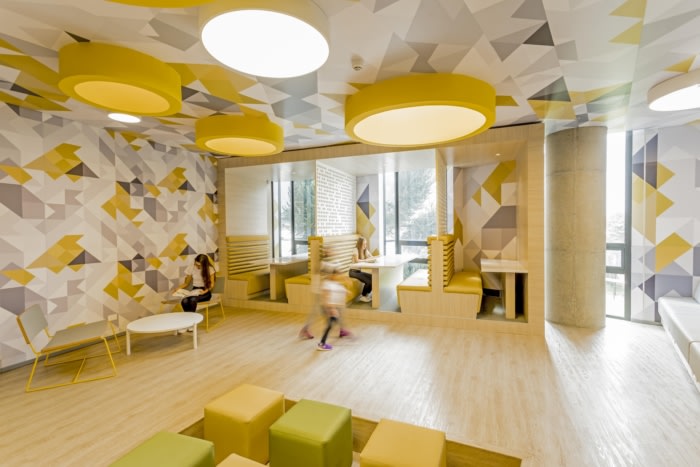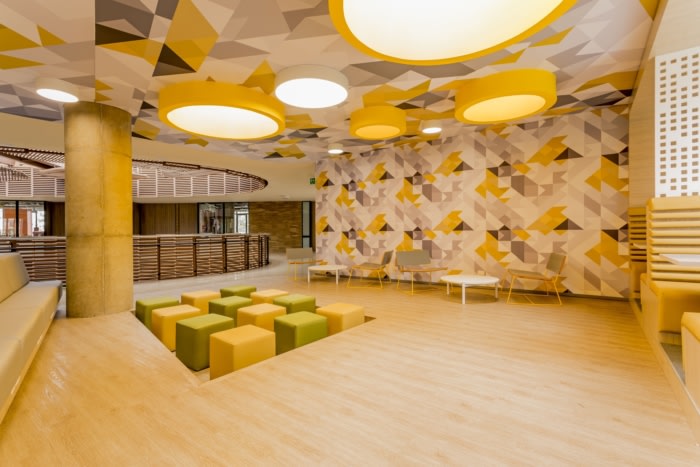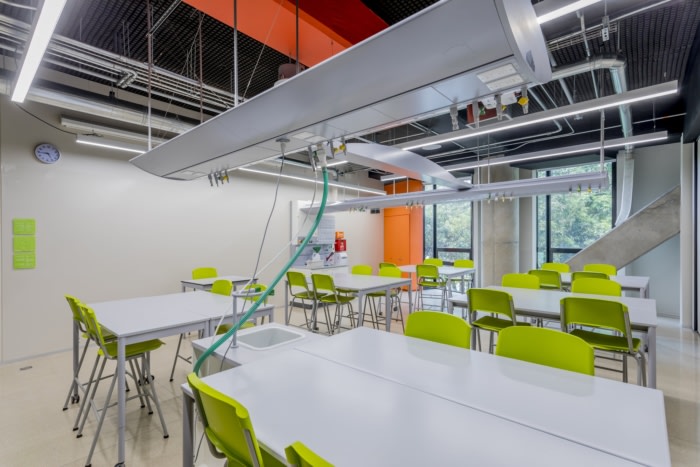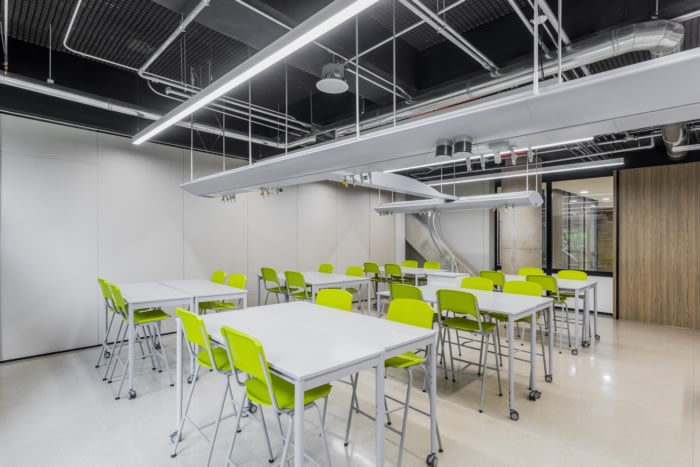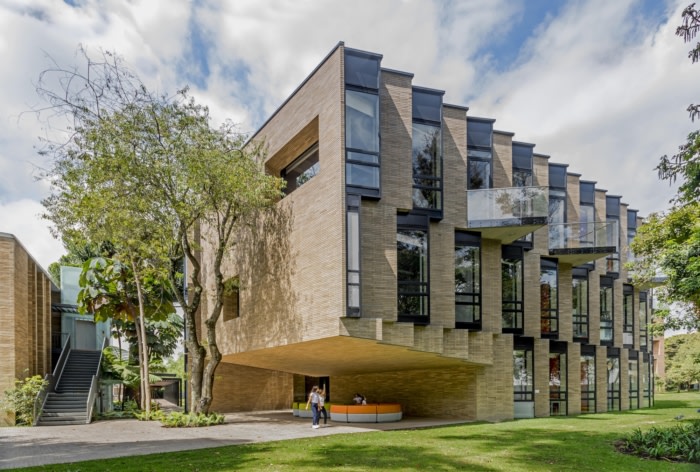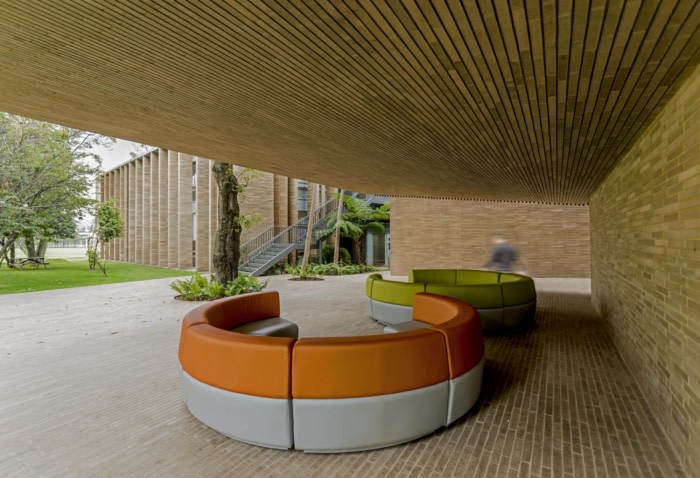Eureka Center in Anglo Colombiano School
Taller de Arquitectura de Bogotá was given the task of completing the Eureka Center at Anglo Colombiano School located in Bogotá, Colombia.
The design of the Eureka Centre Building for the Anglo Colombian School performs as a common ground where research, experimentation, the search for ideas and learning processes, among others, come together in a cyclical system of learning; hence, the concentric construction that surrounds them.
The proposed building, defined by two opposing half-moons, generates a composition of independent elements that read as an entity, even when the ends of them do not formally coincide. The composition emerges from the premise of generating access thresholds at the ends of the concentric shapes while simultaneously allows the “green” in, and consequently the public activities achieve to actively penetrate the building.
The two half-moons slightly separated among each other, define a longitudinal axis which at ground floor level generates access points to the building. These entrances are formally highlighted with a particular gesture through two large overhangs provided in opposite positions at each end of the longitudinal central axis. As a result, the areas planned under these protrusions act as open while also become protected spots from the rain, and attached to the abundant landscaping of the surrounding campus.
Furthermore, the two clay half-moons, embrace a central forest-like courtyard with an “oval” configuration in the form of a leaf; where you can see and mix all of the activities that come together at the perimeter of the oval courtyard. The kinetic form of the patio, in contrast to the static cubic blocks of the rest of the School, allowed us to give a special image to the research within the building complex.
Furthermore, a concentric functional system achieves spontaneous encounters for the students, whom by walking around endup facing different fields of knowledge, that can then attract them and also generate interest. The shape of the building and its functional principle performs as an exhibit itself, where the classrooms and events happening around are visible due to the transparency provided on the materials; this enhances the possibilities of seeing and be seen, of sharing the work and create enthusiasm on others with your results.
As a result of the concentric functional approach, the central space plays a fundamental roll, not only because it carries the circulations along it’s perimeter, but also because it promotes informal areas along it’s course, where encounter and interchange happens as a result.
The central space is therefore the main building articulator, connecting the different floor plans via a “helical” system of circulations ending at the student lounge at the top floor plan and afterwards, connecting onto the building terrace which performs as an additional academic area, where students can research about climatic conditions of the surroundings and develop further educational activities.
On the other hand, the classrooms foreseen in the perimeter of the “oval” patio, get interconnected via the “helical” system of circulations. The building contains areas for mathematics, chemistry, physics and technology among other fields of knowledge; given the variety of the tasks to be developed within the building, a laboratory technological feature called “none-fixed pipe” was introduced.
Firm: Taller de Arquitectura de Bogotá
Design Team: Isabel Saffon, Julián Cortés, Christian Durango, Esteban Lozada, Andrea Mozzato, Iván Castro, Carolina Herrera, Santiago Ballen, Lucas Castro, Susana Garzón, Laura Zapata, Laura Santana.
Photography: Rodrigo Dávila

